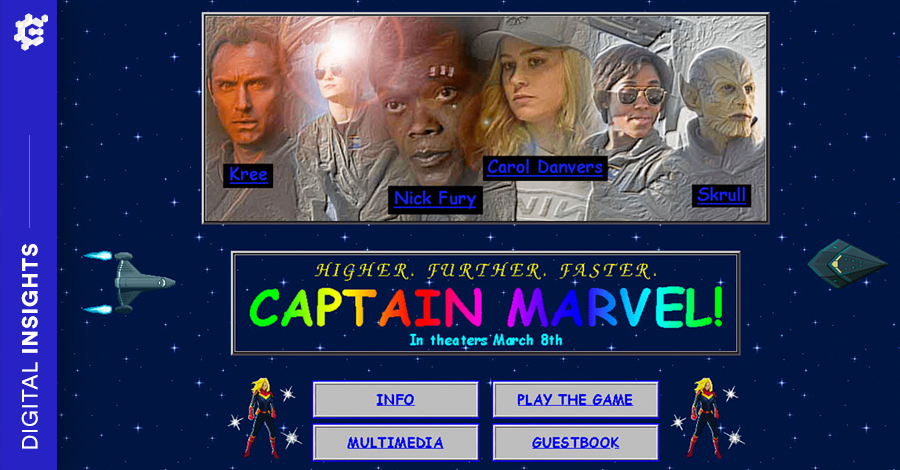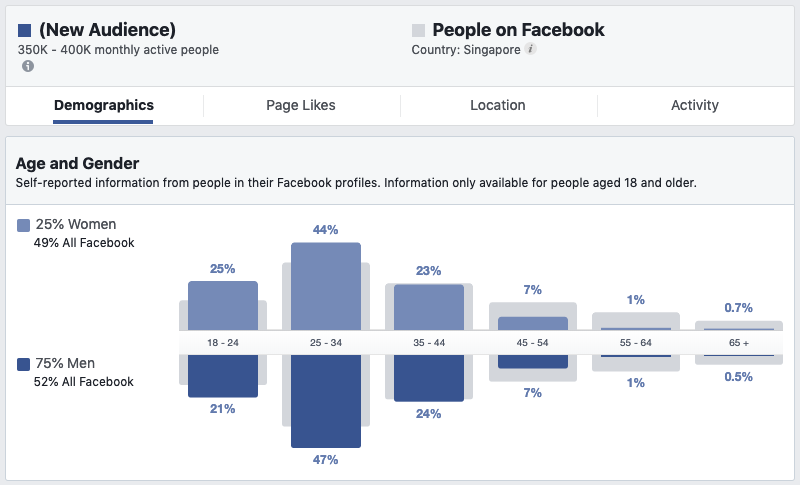

Captain Marvel’s Brilliant 90's-Inspired Website is a Testament To The Power of Nostalgia in Marketing


Less than a week ago, the Captain Marvel landing page was unleashed into the world, and it was nothing short of amazing (in my opinion). While I’d like to deny the immediate resonance I have with the website stemming from its appeal to the active-during-the-internet-nascency nerd in me, it’s actually specifically that which makes it so endearing to a specific group of people - and intriguing to others.
My take: The Captain Marvel website is marketing genius.
Screengrab of website. Courtesy of Marvel Studios.
Marketing and branding has been around enough that most stylistic tropes that can be used, has been used in brand visuals. Despite this, Captain Marvel’s website aesthetic managed to stay refreshing, not because it is new (the original hobbyist Geocities fansites, blogspot sites of the nineties would disagree), but because I do not actually recall seeing this style ever being applied on a big-name brand in recent memory.
Looking beyond the visuals: What makes Captain Marvel’s microsite work?
As a marketer, I base my professional opinion on what works, and what doesn’t, on quantifiable information available to me. So I sought out that exact information.
I turned to Facebook audience insights, to peek Marvel Studio’s (the arm of Marvel that produces the movies) fanbase, to determine who their core audience was, with a hypothesis that people in my own demographic (I’m a 29-year-old male) would make up a bulk of that audience.

Facebook audience insights of Marvel Studios.
I was right. The core audience, 36% of the audience segment (which we can deduce to be people who are engaged with the brand), are men aged between 25-34.
This is the same demographic that can be considered website pioneers, who would be most cognisant with branding that harkens back to the days when we would frequent, and even tinker with our own websites in search for our digital communities (most of which, looked like the Marvel’s microsite).

36% of Marvel Studio's fans in Singapore, are Males aged between 25 and 34.
Design nuances and site features that have since gone out of style - such as animated GIFs as background, poorly cropped photos, a web counter to show how many people have visited your site (this was the hallmark of website legitimacy back then), WordArt-looking headers, the infamous lens flare, and even a guestbook - are all present here.
This suggests that Marvel understands that it’s key demographic would resonate with visuals like the one they have presented, making their choice to present a website in the style, a well-reasoned decision.
The power of nostalgia in marketing brands and products.
People like remembering and reliving the yesteryears. ‘Throwback Thursday’ (#TBT) has over 470,548,090 tags on Instagram. Recalling fond memories from our past often provides us with a welcomed break from our hectic lives, and temporary relief from the loneliness, boredom and anxiety that is plaguing many a millennial today.
Making a connection with users through visuals that are recognisable, drawn from simpler times of their childhood evokes similar feelings of comfort. It creates an instant emotional bond between the brand and the viewer, much like the visuals Marvel is associating itself with.
Beyond just feel-good vibes, evoking emotion in brand communication is a proven way to sell.
Let's take Pokemon Go and Ingress for example. Both games are developed by the same company, using the same technology, and with a similar method of play. But while Pokemon Go has been downloaded more than 800 million times, Ingress only has a mere 20 million to show for. The only differentiating factor?
Nostalgic branding.
This fact is not lost on advertisers the world over. In the recently concluded Super Bowl LIII, Doritos paid a reported US$175,000 per second doing just that, utilising Backstreet Boy’s 90s hit “I Want It That Way” to generate brand awareness. Judging by the positive viewer response, and the ad making several “Best of Super Bowl” ads list this year, it seems like money well spent!
Caution: Do retro, but only when it ties back to your product or story, not out of the blue.
Nostalgia works, but before you go about redesigning assets around a pre-millennium aesthetic, here’s a word of caution: ensure your brand can tie back to the choice of brand projection.
Without any brand connotation to your choice of brand portrayal, the fads you choose to present may land you in a gutter - where you sell the fad instead of having the fad sell your product. You may also leave users confused with your brand direction and message.
In Captain Marvel’s case, the film is set in 1995, coinciding with the period when Geocities-styled websites were pervasive. The site is also presented to be almost fan-initiated, instead of one that is brand-originated.
When it comes to your product - always consider the nature of your product or your story. Does your company possess a heritage to be proud of, or is your key value proposition one that is modern, and rooted in being “future forward”?
If the case for you is the latter, then nostalgia marketing may not be for you. Otherwise, like Marvel, it could be an opportune way to instantly connect and delight your intended audience from the 90s (or beyond), and actually serve to drive marketing objectives instead of just exist as another digital asset.
More insights

